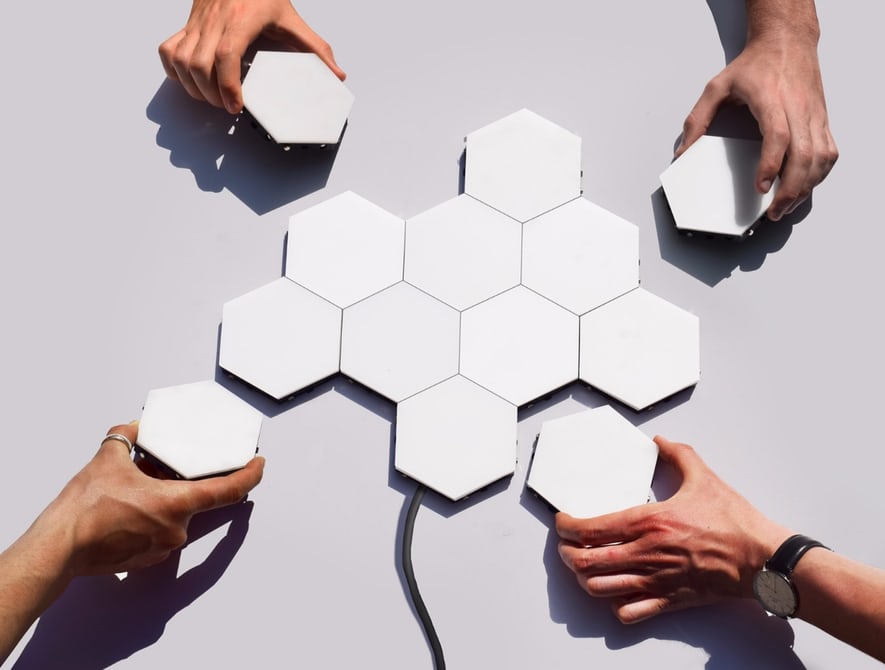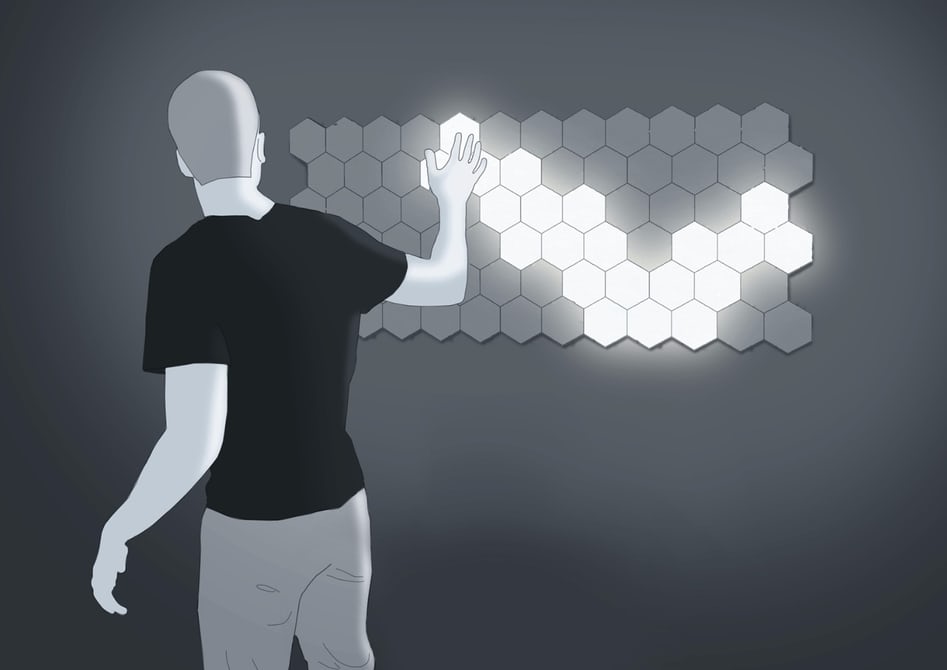How cool would it be to illuminate an entire wall? It would be quite dazzling, of course, even if it’s just for show, though some good use can come of it, too. That’s the principle behind the Helios modular LED lighting system, where hexagonal units can be joined together magnetically to cover any area and then be turned on or off individually by touch.

Image source: Helios.
At 4.3 inches, the Helio modules are tiny, and are 0.4 inches thick. According to Dyena, the firm behind the Helios system, the aim is for users to be able to turn the interior architecture of a space into a light source. For example, a few of the modules could be used together at a desk to provide light when working or a whole wall could be covered in them.
Each 6.3-W unit produces 400 lm, which is about the same brightness as a 40-W incandescent bulb or 6-W LED bulb. When an additional module is added, it will be similar to lighting a room with an extra bulb. What’s more, up to 105 modules can be joined together in a single circuit. A display can include more than 105 modules, but they must be on separate circuits.
So how do the modules stick to your walls? They can be connected using nails or adhesive pads and are linked together by way of small magnets embedded in each of their sides. For large installations, it’s suggested that at least the central modules are connected to the wall using nails to provide a strong starting point.

Image source: Helios.
Impressively, the magnetic joining points double as electrical connections, allowing power from one module plugged into an adapter to be relayed between up to 105 linked modules. Once a number of these units are joined this way, a user can simply tap or sweep their hand over the ones they want to switch on, with integrated capacitive sensors detecting their touch.
A Kickstarter crowdfunding campaign for the lighting system is underway. Pledges are starting at $61 for a pack of five panels and a power unit. Shipping is expected to take place in April 2017.
Sources: Helios, Kickstarter
Advertisement
Learn more about Electronic Products Magazine





